My Very Long Delayed Entry (Trip to Beijing)
Author's note: This is actually my second time writing my experience in Beijing. I'd accidentally deleted this file, together with the rest of my pictures and audio files. Fortunately, I had uploaded all the audio files into Uploadingit (however suddenly all my files in it have vanished! So, no more audio.), but I had to re-scan all my pictures! I also know that this post has taken too much time to be completed. Thousand apologies.
Be forewarned. This post is by far my longest post ever. As there are graphics attached to this post, it will take some time for this entry to load. Please be patient.
On the 18th of June 2006 till the 25th of June 2006, my family and I had been travelling in China. We went to Beijing, Chengde and Tianjin. The reason we chose Beijing was to see the rich history that is in Beijing, such as the Great Wall of China, the Forbidden City and many more.
1st day (18th of June 2006)
Today, at 0200 hours we left on a bus from Ipoh to KLIA. This bus (by the name of YoYo) caters to customers who travel only from Ipoh to KLIA and vice versa. At 0500 hours, we reached the airport. Figuring that it was still too early to check-in, we decided to have our breakfast at McDonalds.
At 0700 hours, we met our tour leader (Mr. Teh) and checked-in, getting our boarding passes. Half an hour later we made our way to the boarding terminal via the Aerotrain. The boarding terminal is separated from the main terminal. Only international flights passengers will go to this boarding terminal. It was in this terminal that I managed to post up the 18th of June blog entry. There were four computers at anybody's disposal. All the four computers were connected to the Internet. I wasted no time getting one vacant PC and immediately put up an entry and checked the news.
At 0900 hours, we finally boarded the plane and took off to Beijing. The flight took about six and a half hours. When we reached Beijing, it was already past three in the evening. Upon our arrival at the airport, the first thing that struck into our mind when we left the aeroplane was, "It's warm in here!" We thought that our trip was not going to be such a nice one after all, if the weather was indeed that warm. According to the weather forecast which I did two days prior to our trip, the temperature would rise to as high as 36 degrees Celsius.
There, upon checking out the airport, we were welcomed by our local tour guide (Li Xiang). He is a Manchurian. This was not very surprising as Beijing is located at the northern part of China, where the former Manchuria is located nearby. Therefore, the presence of Manchurians, though less, was not something to be surprised of. However, the tour guide could not speak a bit of his ancestral language (the Manchurian language). Apparently, his grandfather could not speak Manchurian either, so how would you expect the next generation to know?
It was about four something in the evening. We left the airport and made our way to the restaurant, which was about an hour's drive from the airport. We had our dinner and then made our way to a performance show. It was an acrobatic performance. In my opinion, the acrobatic performance that I had watched during my Shanghai trip was far better and more memorable than the one I watched in Beijing.
After the performance, we went to our hotel to check-in for the night. There, in Lichang Hotel, we spent three nights.
2nd day (19th of June 2006)
Today, we went to Tian'an'men Square, where the Forbidden City is located nearby. The square is indeed square in shape, and there are four important structures at the four sides of the square, one being the Forbidden City; the others include the China People's Assembly Hall, the national museum and the Mao Ze-dong Mausoleum. At the square, we enjoyed taking pictures.
Not long after that, we made our way to the Forbidden City. Only having stepped into the Forbidden City did we realise that the palace was indeed very, very big! One could easily get lost in such places. One thing that we observed was the fact that there were no trees at all in the compound of the palace. We asked our tour guide for the reason to such an observation. He replied that this had got to do with feng-shui, and his explanation was logical. However, as the explanation is long and quite complex, I don't propose to elaborate it here.
For your information, the name of the Imperial Palace still lives up till today. Certain parts of the Forbidden City, as its name suggests, still remains forbidden to tourists. For instance, we were not allowed to enter the room where the throne was located. We could only take pictures from the outside. This is to prevent tourists from damaging any part of the throne. Its historical value is so high that they can't risk tourists peering in and then causing any damage.
We walked further into the Forbidden City and eventually we reached a garden area within the palace compound. The garden is the only area where you could see greens. Some of the trees there are hundreds of years old. It's quite hard to believe but that's the fact they claim is right.
Quite a beautiful view of Summer Palace (weeping willows)
Exterior view of the Summer Palace
After lunch, we made our way to the Summer Palace. This palace was a residence where the Empress Dowager Ci'Xi used to live together with the emperor. The Empress Dowager was a very vain woman who cared not for the country but for herself. In those days, 60 copper coins would suffice one ordinary family at least half a year's of food supplies. However, the Empress Dowager spent 60 copper coins daily on her meals.
Being such a vain and cruel woman, she had ordered for the Summer Palace to be built, and it was from here that she ruled the country indirectly. Though she had no control over the country, she managed to control the emperor, thus turning him into a puppet.
3rd day (20th of June 2006)
Let's skip certain uninteresting parts. We went to the jade factory first where jade bangles, jade rings and so on are being sold. No, this is utterly uninteresting so I'll tell you the most interesting part of the trip for today.
The Great Wall of China
At the highest point of the Great Wall of China (888 metres above sea level; the path ahead was too dangerous for us to continue climbing)
Today, the first destination is the Great Wall of China. The Badaling Great Wall was one of the sections of the Great Wall that was chosen for us, partially because it is the best preserved part of the Great Wall of China that can be climbed. The other parts of the Great Wall is still in a deplorable condition. This is understandable because it is virtually impossible to maintain the condition of 6000 kilometres worth of stone.
There was once a claim that the Great Wall of China could be seen clearly from space. However, recently there had been debates about the ability to see the Great Wall from space. Some believe that the Great Wall is still too short to be seen from space. Well, people are still speculating.
The Great Wall was built on mountains; building the Great Wall itself already seemed impossible considering the fact that it had to be built on a very high altitude (thousands of feet above sea level), but somehow the Chinese in those days managed to complete the construction of the Great Wall of China. It was also here that I learnt something, that although the first man (or emperor) who built the Great Wall is Shih Huang Ti, yet the person who came out with the idea of building the Great Wall didn't originate from the first emperor of China. I have somehow forgotten the name of the prominent figure who first came out with the idea of building the Great Wall.
Despite being summer, it was very cool and windy at the Great Wall of China, which was anticipated, because it was built on mountains, as I had mentioned before. Upon our arrival at the Great Wall (which was about an hour's drive from Beijing), we had a group photograph and then we started climbing the Great Wall. Some of us couldn't even climb the first few steps of the Great Wall and immediately returned to the bus. My father, my mother and I persisted and continued climbing. I must admit however that climbing the Great Wall wasn't an easy feat. Some steps are about two to three feet high and some are just about one foot high. Even I, who have long legs, found it rather difficult to climb, not to mention my mother who is of course shorter than me. Some of those who climbed the Great Wall had to climb up seated, not standing. It's hard to picture until I demonstrate it to you.
If climbing up the Great Wall is difficult enough, coming down of it is even harder. My whole family managed to climb up till the highest point allowed (888 metres above sea level). Beyond that point, nobody is allowed to climb anymore, because of the damaged steps and dangerous sections of the wall.
Did I say that it was even more difficult to come down? Well, there's a simple reason to it. You see, the steps or stairs of the Great Wall are nothing like those in your house. At least the stairs back at home are built on a 45-degree inclined plane, therefore when you ascend or descend the stairs, you will not feel the steepness of the stairs. However, this is not the same for the Great Wall. When I came down the wall, I couldn't see the next step below me; it was as if the stairs were built on a 80-degree or 85-degree inclined plane. So, could you imagine it? One slip and you could fall more than thousand feet non-stop. In other words, you can't afford a small (but fatal) mistake or you'll fall to your death.
After our descent from the Great Wall of China, we made our way to lunch. Having climbed the Great Wall of China, a lot of us felt very hungry.
After lunch, we made our way to the 13 Ming Tombs. This was where 13 of the Ming emperors were buried. There were 16 Ming emperors during the Ming Dynasty, but surprisingly, only 13 emperors were buried in the one part of Beijing where the feng-shui was and is believed to be the best. The reason that there were only thirteen emperors being buried in the same area (but very far apart from each other) was that one of the emperors went missing (apparently that was why Admiral Zheng He [Cheng Ho] was summoned to find back this missing emperor, who was believed to have fled to South-East Asia). Another reason was that the first emperor of the Ming Dynasty, Zhu Yuan Zhang, was buried in Nanjing (then the capital of China). I've forgotten the reason to why the another Ming emperor was not buried in Beijing.
We were taken to the Ding Tomb. Previously in the morning, we had to climb thousands of feet on the Great Wall of China, but now we had to descend about 65 metres underground to visit the tomb of one of the Ming emperors.
Something interesting to share here. You see, before the emperor dies, the tomb was already built, and before the builders could begin their construction work, they had to drink wine until they were drunk. There is a reason for this. You see, like the Egyptian Pharaoh tombs, treasures are kept next to the coffin of the emperor, and the emperor would definitely want to prevent tomb raiders from stealing away the riches. Therefore, they had to turn the tomb builders into drunkards. These builders would then build the tomb as planned, as well as the entrance of the tomb. However, the entrance of the tomb is so well-concealed that nobody could find the entrance to the tomb at all from the outside. Even if there are tomb raiders, they couldn't break open the tomb just like that (remember that the tomb is located 65 metres underground and that the exterior part of the tomb is made of stone). The builders, who were drunk, couldn't possibly remember where the entrance was either. This served as a protection for the tomb quite effectively. Even just recently, before the Ding Tomb was opened to tourists, historians had a hard time trying to locate the entrance to the Ding Tomb. They had to drill at many sections of the tomb before they succeeded in finding the entrance.
We entered through the entrance that the historians found. Upon our entry, we found that we had to go down a flight of stairs. The depth of the tomb is comparable to a nine-storey building. We had to descend for about five minutes before reaching the tomb. There, we managed to see the place where the coffin of the emperor and his empresses (two empresses; the emperor had one at first, but she died and the emperor than re-married) was supposed to be laid. There was also a throne made of stone for the soul of the emperor to sit on.
The visit to the Ming Tombs was quite short, as there weren't much to see. What is so important about this place is that it is rich in historical value, and the scale of the construction in which the tombs were built.
4th day (21st of June 2006) [most interesting and perilous)
The Temple of Heaven
Before making our way to Cheng'de, we first visited the Temple of Heaven. It was where the emperors used to pray to the gods for better harvest and peace throughout the land for the following year, and to also give thanks for the tranquility and the harvest that the country had reaped all over the years.
The Temple of Heaven is cylindrical in shape, and despite being built without a single nail (not even today), about a decade or so ago, when an earthquake struck, the surrounding buildings (that were built in much later years) collapsed but the Temple of Heaven still remained intact. The stability of the temple so baffles the engineers. The foundation of the temple is so good that until today, no cracks or signs of wear and tear could be seen. However, like the Forbidden City, we could only see the interior side of the temple from the outside.
During the Cultural Revolution launched by Mao Ze-dong, this temple managed to survive from being torn down by the army. Today, after some renovation work, it is now a tourist spectacle. It was said that before China was given the honour to host the 2008 Olympic Games, the Olympic Games committee requested the Chinese government to preserve all historical monuments, among those are the Temple of Heaven, the Forbidden City, the Summer Palace and many more. Otherwise, they would refuse to let China host the 2008 Olympic Games.
From the Temple of Heaven, we made our way to another part of the temple, but before that we had to go pass a gate. There were three gates (all made of hard wood) and we were asked to choose which gate we would like to go pass. There was also a similar gate in the Forbidden City, and during the feudal era, only certain people could go pass certain gates. The centre gate in the Forbidden City could only be used by the emperor himself and his empress (once only, during her wedding; after that, she could only leave the palace through the back door). The left (west) gate was used by officials in the army (I hope I'm right) and the right (east) gate could only be entered by the other government officials, such as the prime minister and other ministers. Such protocol was also closely connected to feng-shui.
In the Temple of Heaven, there was a bit of difference. The emperor was not allowed to use the centre gate. Why? That was because the Emperor of the Heavens was said to be greater than the emperor of China, for it is the Emperor of the Heavens who provide peace and good yield to the country. The emperor of China was then thought to be the son of the Emperor of the Heavens. In other words, in those days, the people regarded the emperor of China as the descendants of the heavens. As such, only the Emperor of the Heavens (imaginary) could use the centre gate, the emperor would use the west gate.
From the gates, we made our way to another section of the temple, where the emperor would make proclamations for the country. Here, the emperor would also make offerings and burn joss sticks. This section of the temple is white in colour and was built like a stage without a roof. It was made of stone but some part of it felt like marble. At the centre of this stage is what looked like a spherical orb, where people now frequently go and stand on the orb and make wishes (but only ONE wish). It was thought that whatever wish would come true (although I had yet to find out).
Some of us who stood on the orb made a surprising discovery. Nearby was the Wall of Echoes (despite being called a wall, it's actually an enclosed building), which is said that any sound made in there would produce echoes. The Wall of Echoes was quite a distance from where we stood at the orb. However, when we clapped our hands, we could clearly hear the echo of our clapping. Bear in mind that there are no tall walls surrounding the orb and nothing to reflect sound waves. The echo was faint but clearly audible.
From the Temple of Heaven, we went for lunch and did some shopping in two flea markets. It was in one of the flea markets where I managed to buy something I was interested at: a traditional Chinese outfit. I bought only the long-sleeved shirt, but not the pants. It fits me just nicely and it costs only RM40 (or 80 Chinese Yuan). You can't get that made here in Malaysia at that price. Plus, the shirt has a double-layer, which is normally found in blazers and executive coats.
After some shopping, we made our way to Cheng'de. What was to be a four-hour journey became a six-hour one. In the middle of our destination, we met in an accident. Our bus driver was no speed fiend, and he was within the speed limit. About 100 metres in front of him, he saw an old man (topless) wheeling his bicycle and was crossing the road. At 60 km/h, the bus could not stop in time to let the walking cyclist pass so the driver sounded the horn. Surprisingly, that old man looked right instead of left (we were approaching from his left), and continued crossing, totally unaware of what was going to hit him!
The driver didn't stop sounding the horn and frantically stepped on his brakes, trying his very best to avoid hitting that old man. I, who was sitting in the centre seat at the back of the bus could see clearly what was happening; when the driver applied his emergency brakes, some of the passengers screamed while others (including me) simply shouted, "Whoa!" or "No!"
After that, we heard, "Crash!" followed by "Boom! Boom!" before the bus came to a complete halt. I realised that the first "Crash!" was due to the collision of the front wheel of the bus with the road divider. I couldn't and still can't tell for sure what the "Boom! Boom!" was. In my heart, I was praying that we didn't knock down that careless old man. In an instant, the driver, the local tour-guide and our tour leader got down of the bus and rushed behind to check out the condition of the old man. He was unhurt (we didn't knock him at all, thanks to the skill of the driver) and totally drunk (they reported that the old man's breath had a strong alcohol smell). In his bicycle basket was another bottle of beer. Tailing behind us were two buses who were also on the way to Cheng'de. They witnessed the accident and the drivers of the two other buses came down to see what happened and to offer assistance.
Upon seeing that the old man was unhurt, we heaved a sigh of relieved and began talking about the accident. However, this was only the beginning of our delay. To our horror, while trying to avoid the old man, the rear left wheel of the bus collided hard with the road divider and burst, thus causing the tyre to go flat. The driver brought the bus to the side of the road and stopped. The other two buses who followed us from behind also stopped behind us. The drivers and the other local tour-guides came down to see what happened and found the flat tyre.
There were seventeen of us in our tour. The two other buses were also actually fetching Malaysian tourists from Beijing to Cheng'de. One of them actually would have liked to offer our tour a lift to Cheng'de to save time (while the tyre of our bus got replaced), but unfortunately being such a small bus, there was no room at all. The other tour group in another bigger bus could still accommodate another ten of us, but that particular group itself refused to offer help. The tour-guide could do nothing but to comply with her customers' request and left after apologising to us that she could do nothing to change the minds of that particular group. We were rather angry with them for being so heartless and pitiless. The group who regretted not being able to offer any assistance at all to fetch us to Cheng'de asked their driver to help us replace the flat tyre.
It was most unfortunate that the spare tyre itself was semi-flat, but our most fortunate part was that there was a tyre shop exactly opposite to the place where we stopped. In no time, a tyre was requested from that shop and in about twenty minutes they managed to get the flat tyre out and the new tyre in.
After all that commotion, we were ready once again to leave. The group who stayed put to make sure that we could continue our journey asked our driver to be in front of them so that they could still offer help if the needed arose. Fortunately, the need never came and it was around 2130 hours before we finally saw the lights that adorn the city of Cheng'de (we started our journey at about 1500 hours). We were indeed grateful to the group who actually were so willing to sacrifice their time to help us and see to our needs during such critical moments. We were also happy that our driver managed to avoid knocking the old man with such skill. It would have definitely been fatal for that old man if our driver were to knock him down.
5th day (22nd of June 2006) [the aftermath of the accident]
Although all of us had a good sleep the night before, the aftermath of the accident which happened in the middle of our journey to Cheng'de was still felt. Most of us were still talking about the accident and about the consequences if the bus had collided with the old man.
Another scenic view at the Summer Resort
Nevertheless, we were all ready for our tour. There, we had got another tour-guide who lives in Cheng'de. She is also a Manchurian and we were first brought to the Summer Resort. The Summer Resort is another palace built by the emperor during the Qing Dynasty for the emperor to do his hunting and for the army to train. The emperor would spend eight days from Beijing to Cheng'de and stay in the Summer Resort during the second half of the year. Here, various animals could be seen and hunted, among them the deer, wild chickens and so on.
The Summer Resort itself occupies half of Cheng'de and is (if I'm not wrong) sixteen times bigger than the Summer Palace in Beijing. Therefore, it would not be practical for us to walk the whole of Summer Resort. We had decided to take the buggy then. Even travelling around Summer Resort in the buggy took us about three hours to complete our tour there. Within the compound of the Summer Resort, there is a five-star hotel. To me, I would rather call it a chalet because the rooms are built like chalets. Instead of bricks and concrete, the rooms are actually constructed using plastic with steel frames, more like those Mongolian camps that you could see in Mongolia.
The Summer Resort was like the second home for the emperor. During the emperor's stay here, most of the governing was also carried out in the Summer Resort. Emperor Kang'xi and Emperor Qian'long were among the Qing emperors who stayed in Summer Resort during the second half of the year.
There is also a range of walls surrounding the compound of the Summer Resort. These walls were also built on the mountains and people often thought that they are the continuation of the Great Wall of China. In fact, these walls did not originate from the Great Wall of China, although one section of the Great Wall does pass by Cheng'de.
Pu'ta'la Temple
After visiting the Summer Resort, we made our way to a Lama temple known as Pu'ta'la Temple. The design of this temple is similar to the one in Tibet and was blessed by the Dalai Lama. Today, it has become a tourist attraction. What is so special about this temple is the fact that the design itself is different from the other temples. The temple is rectangular and with windows that are sealed with bricks (they are never open). Often, when the building is painted in red, the windows are white and when the building is white, the windows are red.
The temple itself is located on a hill, and is about 80 to 100 metres tall. It is a giant structure by itself. Within the temple is a pagoda with roofs covered with tiles plated with gold. During the Second World War, the Japanese soldiers (it seemed) raided the temple and saw the gold-plated tiles of the roofs on the pagoda. As one of the roofs was particular low, the soldiers could scrape off the gold from the tiles, leaving the copper beneath it. The gold-plated tiles where the soldiers could not reach were left untouched.
It was also here in Pu'ta'la Temple where my mother bought home two bags of sweet snacks. I don't know what they are called in English, but they are covered with sesame seeds. After hearing the name of the snack in Mandarin, our tour leader immediately made fun of the name in front of the others (you wouldn't want to know; it's not something really good). We all laughed so much.
Our stay in Cheng'de lasted for only a day and a night. After lunch, we bid farewell to our tour-guide and made our way back to Beijing. Here, I must note that although Cheng'de is one of the smallest cities in China (even smaller than Ipoh), its progress is comparable to that of Kuala Lumpur, with skyscrapers towering here and there.
We arrived Beijing again in the evening at around 1800 hours. We had our dinner and immediately made our way to the Hot Springs Resort in the outskirts of Beijing. It is a five-star hotel with a public bath located adjacent to the hotel and also a private bath which can be found in every hotel room. Being curious about bathing in the hot springs, naturally I decided to join some of the tour members (my parents decided not to participate) who also wanted to have a bath in the public bathing area.
So, with my swimming trunks in hand and a swimming cap (I had to buy one there! Rules are rules, it seemed), we made our way to the public bath. Here, I used the word "public" as in "confined to hotel customers only". There is a swimming pool (which is really cold!) and about six to seven hot baths; each bath has its own medicinal value. Every hot bathing pool is not just merely hot water at 40 to 45 degrees Celsius; each of the pool contains certain herbs that supposedly play a certain role in our health. One of the pools has rose petals covering the surface, another contains milk (good for the skin)!
The bathing area is very well-maintained. There are strict rules and regulations on how one should use the baths and the swimming pool. For instance, it is compulsory to wear a swimming cap in the swimming pool and you are not allowed to walk around the bathing area without your slippers, which are provided at the lockers. Also, you are only permitted to stay in every hot bath for a maximum of fifteen minutes, in which after that you are required to have a five-minute break away from the pool. Only then are you allowed to enter another pool for another hot bath.
Besides taking a hot bath and a good swim, I also had the opportunity to use the Jacuzzi and the sauna. Well, travelling after all meant enjoying yourself, right? Therefore, I was just merely trying to enjoy myself to the fullest.
We spent about an hour and a half there in the public bath. We would have stayed there longer had it not been due to the fact that we had to wake up early (about 0630 hours) the next day.
6th day (23rd of June 2006)
Today, we had to check out from the five-star hotel. It was only a one-night trip, yet, a most memorable one ever! Five-star hotels always come with a five-star service by the hotel staff.
The fort of the Beijing North-east City Gate
Anyway, enough about that hotel. Today, our travels took us to the Beijing North-east City Gate. Upon our arrival at the gate, there was nothing special at first glance. However, little did we know that we were on luck, for the City Gate is open to tourists on certain days only. Feng-shui masters have said that the city gate should only be opened for 108 days in a year, and those 108 days are chosen at random, based on feng-shui.
The Beijing North-east City Gate looks similar to the Great Wall of China, except that it is not part of the Great Wall. Its main function during the feudal era was as a defence system against the enemies. This gate was also the main entrance to the city of Beijing in those days. As the city gate is well-kept and preserved, much of its history can still be seen. Like the Great Wall of China, it was hard to believe how the ancient Chinese managed to build such a gigantic structure when cranes and pulleys were not invented!
Main entrance of the Beijing Underground City
The interior view of the Beijing Underground City (courtesy of The China Reporter)
Next, we went to the Beijing Underground City after lunch. It is also known as the Underground Great Wall of China, for an appropriate reason. During the reign of Mao Ze-dong, he foresaw that if there was war in Beijing, there would be a lot of bloodshed and destruction; rebuilding the city would take ages and it would take even longer if there was a sudden downfall in the population of Beijing. Therefore, Mao had instructed that an underground city be built. This was a secret tactic used in preparation for any war.
Under the orders of Mao, the digging began. It took ten years for the Underground City to be completed. If there is a hospital above ground, then there will also be one underground. If there is a school above ground, then there will be one underground, too. Whatever existed above ground would also exist underground then, except for cars.
Now, the reason that the Underground City is also known as the Underground Great Wall of China is this: the Underground City in Beijing is connected to all nearby cities. In fact, you can walk inside the Underground City and arrive at Tianjin, Shanghai, the Temple of Heaven, Tian'an'men Square, the Great Wall of China, literally speaking, almost anywhere! The length of the Underground City is comparable to that of the Great Wall of China.
The Underground City served its main purpose as a defence system. During emergency periods, the army fought from within the Underground City. There was a room in the Underground City where ammunition was kept and there was also a room where orders were given to the rest of the army to prepare themselves for battle.
The Underground City remained hidden until recently when it is opened to tourists (selected ones only). The Underground City is very damp and wet. During the 1960s, the people who lived in the Underground City faced a critical problem. Due to the damp and wet conditions of the Underground City, people suffered easily from rheumatism and arthritis. Mao Ze-dong realised that this was serious and therefore ordered the problem to be solved. An ingenious solution came. It was found that silk blankets and silk clothes were able to counter the effects of rheumatism and arthritis. They could also prevent rheumatism and arthritis from showing up in the first place. Immediately, a silk factory was built underground. However, as there were a lot of people in Beijing, the demand for silk blankets out-numbered the supply. Therefore, only those with chronic rheumatism and arthritis were privileged to use the silk blankets. (Note: Silk blankets help absorb moisture but does not give out a foul smell, unlike cotton.)
As the Underground City is still regarded as an army area, no photographs were allowed to be taken. The picture that shows the Underground City was taken by another person secretly and uploaded into the Internet. In the Underground City, there was another tour-guide who was in charge of taking us around there. He explained that a lot of the staff who still work in the Underground City are either volunteers or trainee soldiers for the Chinese army.
The tour in the Underground City took two hours, so you can imagine how long and big the Underground City is. During the period of two hours, I noted that the Underground City was surprisingly cold, but no air-conditioning units were found! Throughout our journey underground, only the silk factory remained warm and cozy.
Although the Underground City is now a tourist attraction, unfortunately, the Chinese government has decided to tear it down for development above ground. In about a month, the silk factory in the Underground City will close and the Underground City in Beijing will be demolished. It is a pity that such a historical place has to be removed for the sake of development.
7th Day (24th of June 2006)
After breakfast, it was off to Tianjin. The trip took us about three hours. During the trip, fortunately, there was no mishaps.
Tianjin is a described as "10-years-ago Beijing". In fact, the people here live as if they are still in the 1990s. The city still look 1990s but nevertheless a developed one.
Tianjin Cultural Street (perhaps this is the most beautiful picture of all)
Upon our arrival in Tianjin, we found that there was nothing really special about Tianjin, except for its two streets, Cultural Street and Food Street. The former strongly suggests that the street is one where all cultural works can be found. In fact, it is! From visual arts to embroidery and music, all can be found here in Cultural Street! There are shops selling Chinese paintings, Chinese instruments, embroidery, calligraphy materials and so on.
Here, we took a picture (as seen above) and unknowingly, that is one of the best shots taken during our trip. That is a view of Cultural Street. As you can see, the shops and stalls there look 1950s and 1960s. To us, it was as if walking in history (my father's straw hat made the whole scenario even more 1960s!).
It was also here in Tianjin where we had our dinner before returning to Beijing. After dinner, we were met with another disaster. The bus somehow, during the journey to Tianjin, had its wheel pricked by a nail and was becoming flat. The bus driver assured us that he could still fetch us back to Beijing, but could not make it to our hotel; it would be totally flat by then. Being such a considerate driver, he drove slowly during the whole journey, which caused our return trip to be about four hours. Before entering Beijing, he stopped at a rest house where another bus, he said, was waiting for us. Apparently, he had arranged for another bus to take us back to our hotel while he would stay there to settle the flat tyre issue. He would not be fetching us back to the airport the following day. So, there we bid farewell to him.
As we had no luggage to shift, it made things much easier. We had to just transfer some of our personal belongings that we brought along (such as cameras and the like) to the other bus. Soon, without much talking, we headed back to our hotel in Beijing.
Upon our arrival at the hotel, nobody spoke much either. We were too exhausted to say anything at all. All that we could think of was "glorious bed".
8th Day (25th of June 2006)
This is the day which marks the end of my Beijing-Chengde-Tianjin trip. However, as our flight was in the evening, we still had some time in the morning so off we went to the Panda Zoo.
At the Panda Zoo, we were hoping to see a lot of pandas. We did, but we couldn't see much. Why, you ask? Because pandas are such shy animals! We were hoping to be able to see their front view, however, much to our annoyance, they kept facing their backs at us, munching at the bamboo leaves happily. Still, at times we managed to see their front view. Unlike bears, pandas have paws that work as hands, which allow them to grasp bamboo and climb trees. They have joints at their paws which allow them to function as hands.
The panda has now become the mascot of the 2008 Beijing Olympic Games. Many still do not understand the reason to why the panda is chosen as the mascot. Many thought that the panda is a lazy animal. However, it was said that the panda was chosen as it represents tranquility (peace). From the behaviour of the pandas, they certainly look peaceful and carefree.
After lunch, it was time to go to the Beijing Airport. By now, we were indeed longing for home, but personally I was not longing for the same aeroplane! I was hoping for a Boeing 777, but somehow deep inside me, I knew that it was going to be an Airbus A-330 again.
At 1630 hours, we boarded the aeroplane and were perfectly ready to take off when the pilot had some bad news for us. The weather outside was terrible and visibility was less than 2 kilometres. In fact, I could hardly see anything 50 metres away from the window! Therefore, our flight was delayed. There was a Singapore Airlines plane which was delayed, too, and they had been delayed for the past an hour!
We waited and waited for the permission from the control tower for us to take off. It wasn't until 40 minutes later whereby we were informed that we had to queue to take off and we were the 22nd or 23rd in the line. Everybody was groaning and complaining about the delay.
We had to wait for another one hour (the plane had to even re-fuel!) before the pilot said that we were the next plane to be permitted to leave. And in a few minutes, the plane started to move. All the passengers heaved a sigh of relief and were happy that they were at last going to take off, but not my father. The delay was a disaster to him! He had bought three tickets for us to return to Ipoh. The return time of the bus from KLIA to Ipoh was 0030 hours on 26th of June 2006. We took off at around 1800 hours and it would take at least six hours to arrive at KLIA. It was impossible to be able to catch the bus!
Anyway, the flight took six and a half hours! We just calmly got off the plane, had our passports verified, claimed our baggage and went to see if the bus was still there (we weren't hopeful). As expected, the bus was gone. However, the good news was that our tickets were good for the next bus as well, meaning to say if we missed the first bus that we were scheduled to be in, we could take the next bus home, too. But, the next bus will not come until 1000 hours. So, we had about nine hours to spend!
As getting a hotel would be totally a waste of money, we decided to spend the night in the airport. Although it was uncomfortable, we had to catch some sleep. At 0700 hours, we woke up and had our breakfast at KFC (porridge and chicken) and waited for the bus until 0930 hours. The bus had come earlier than it was expected, and at 1000 hours sharp, we left KLIA for Ipoh.
Three hours later, we arrived Ipoh safe and sound. It wasn't until we arrived home finally that we simply forget about unpacking and had a good day's sleep.
That concludes my Beijing travels. I hope you have enjoyed it.
Labels: Henry Yew
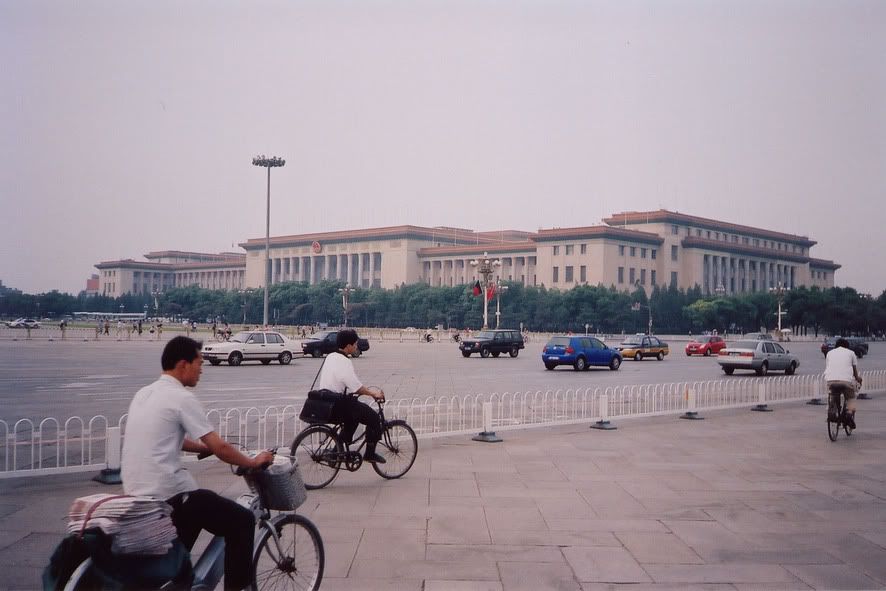
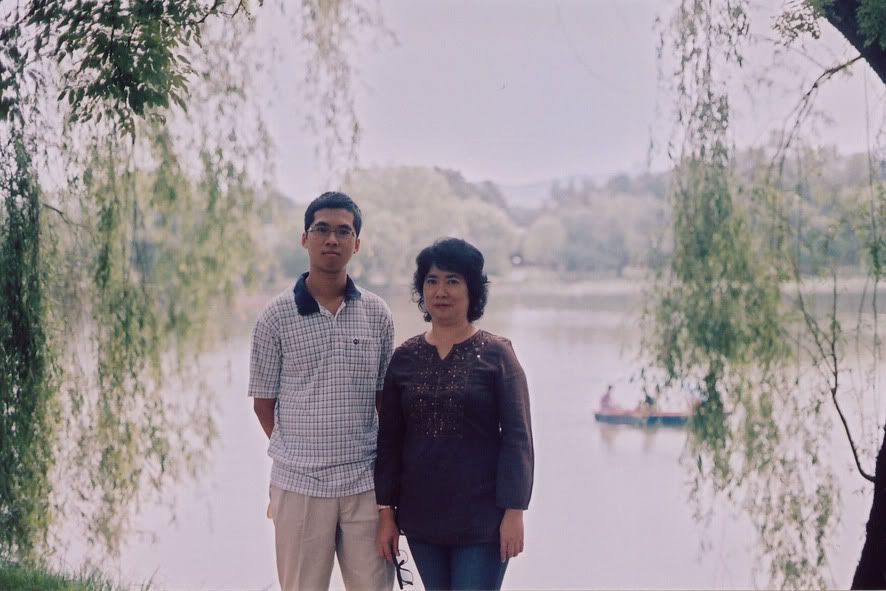
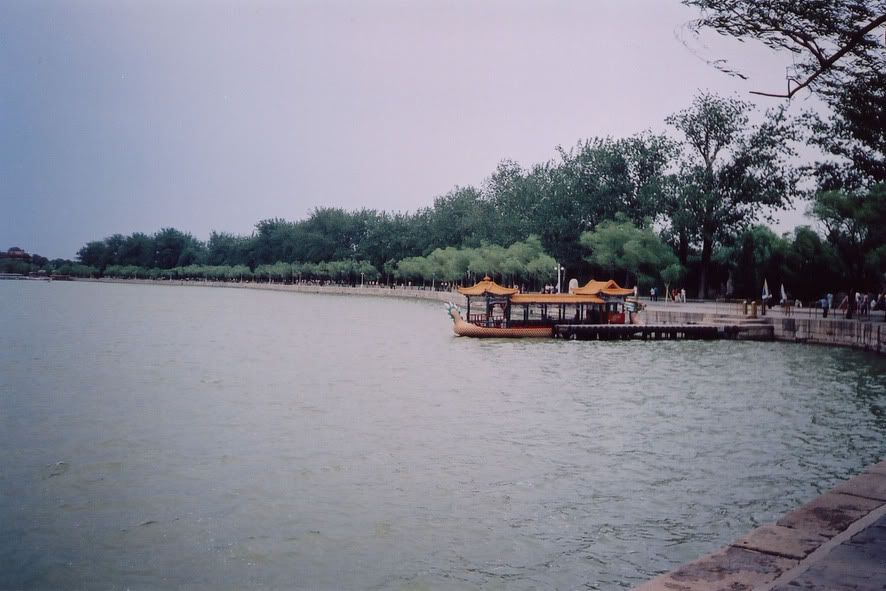
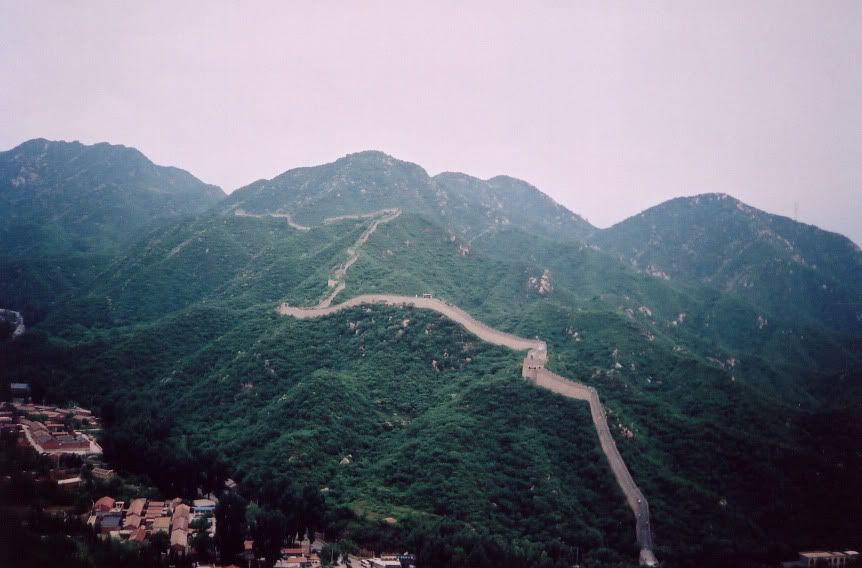
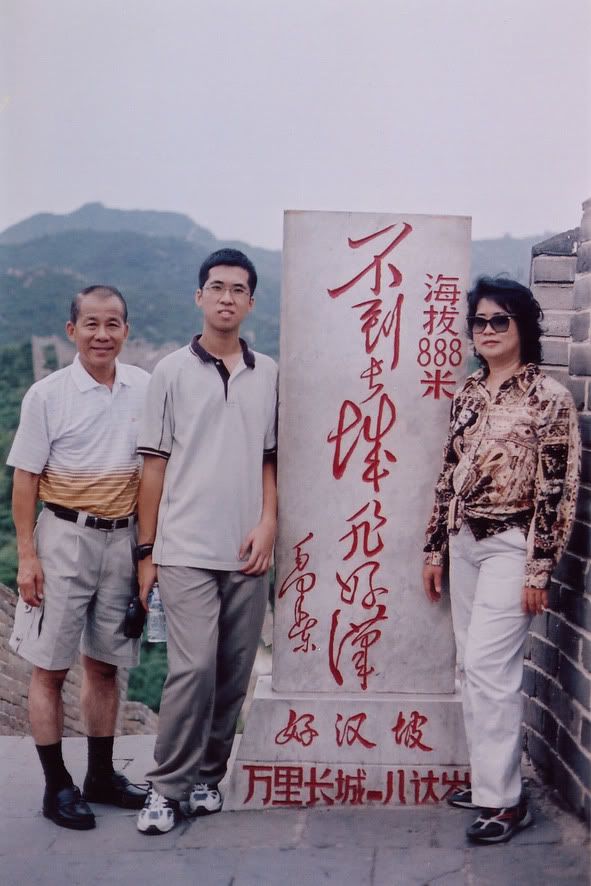
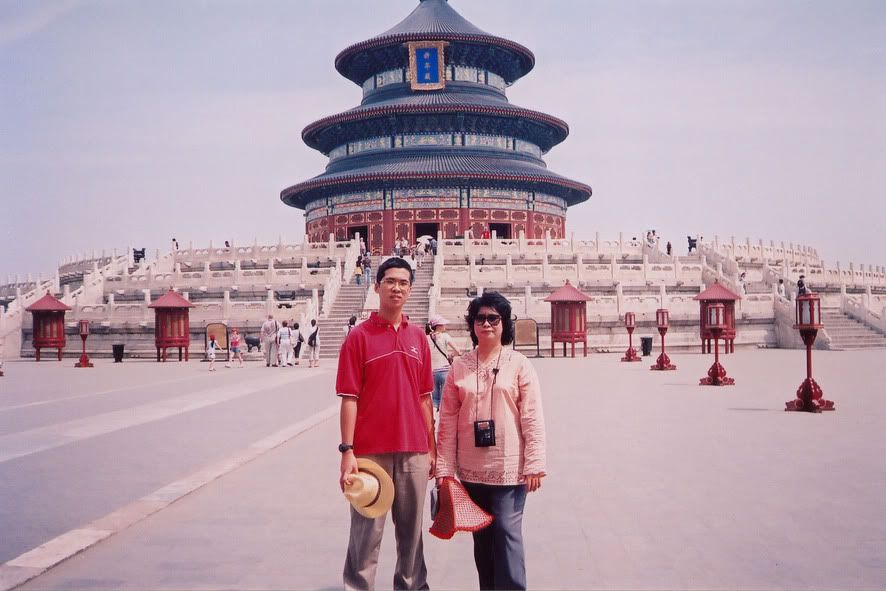
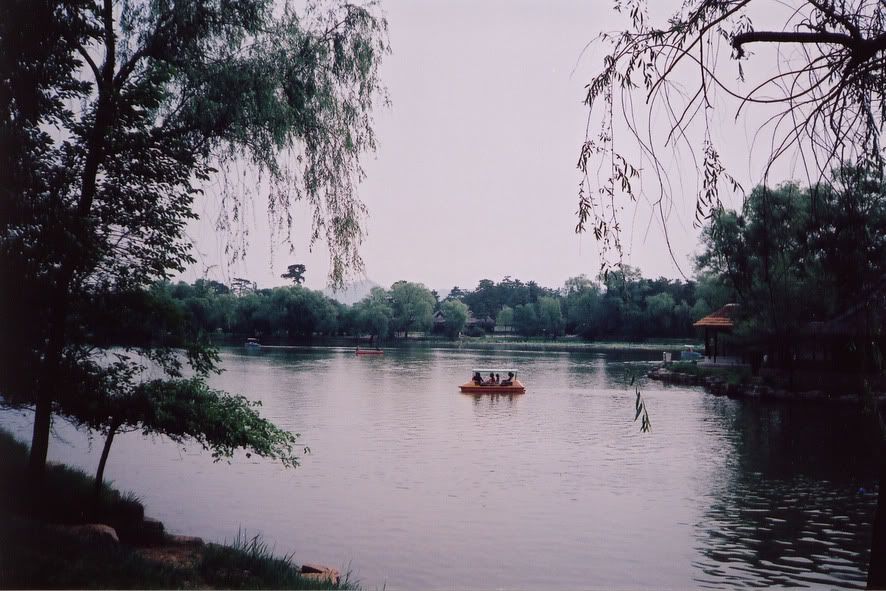

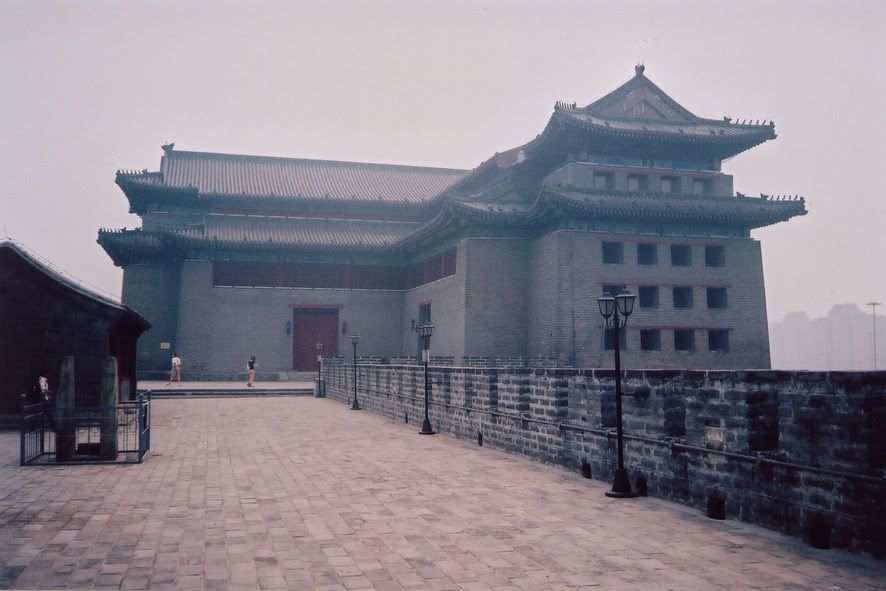
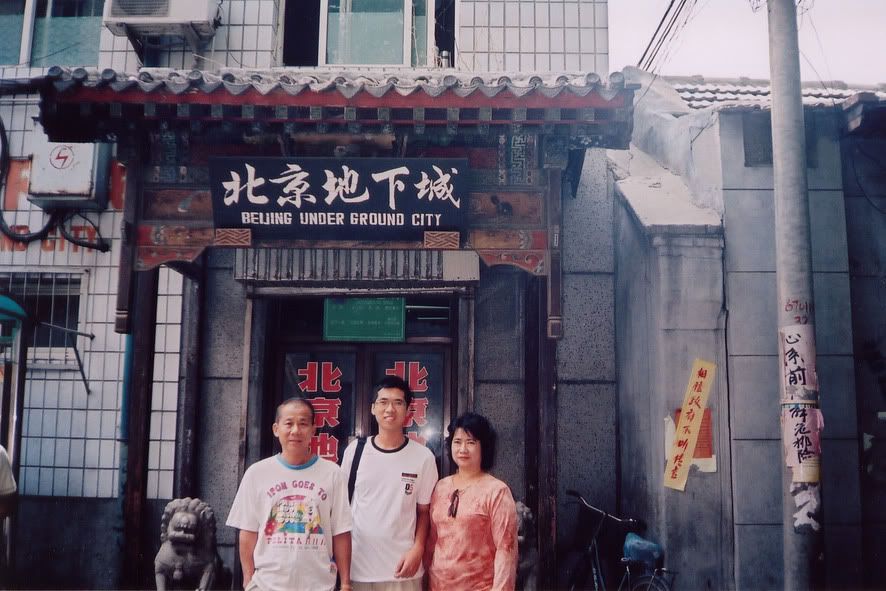
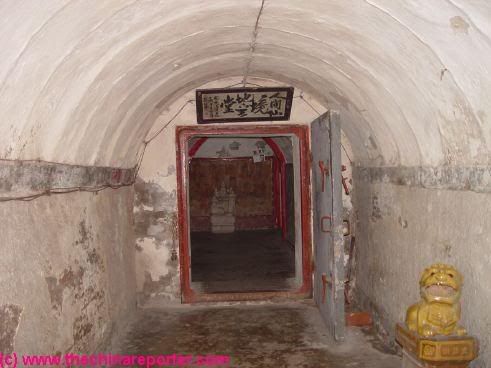
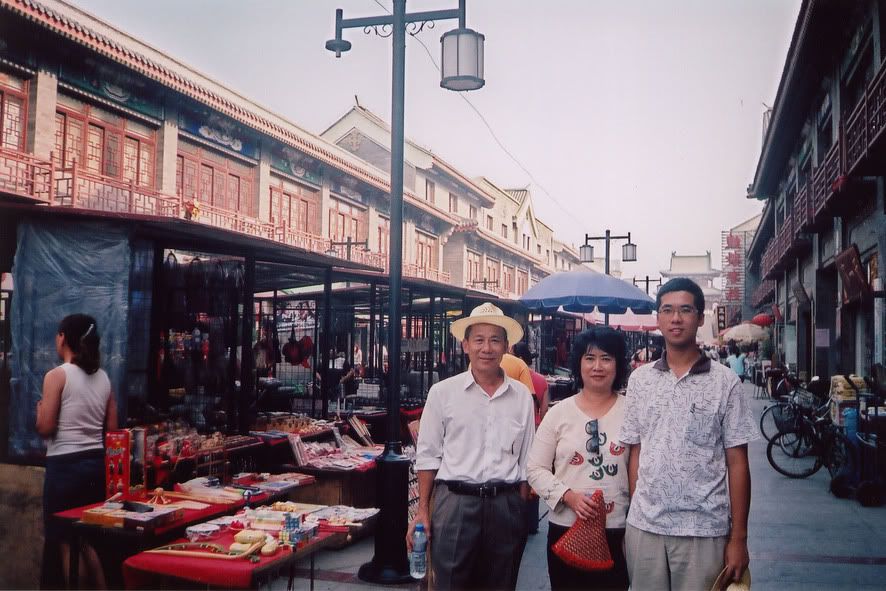





2 Comments:
wa liao... so long... my eyes! my eyes! ouch! ouch!!
nice entry. I'll be going on a similar trip to Beijing as yours next week. Read your entry, the itenary is exactly the same!
Did you follow Forever Holidays Tour?
Post a Comment
<< Home